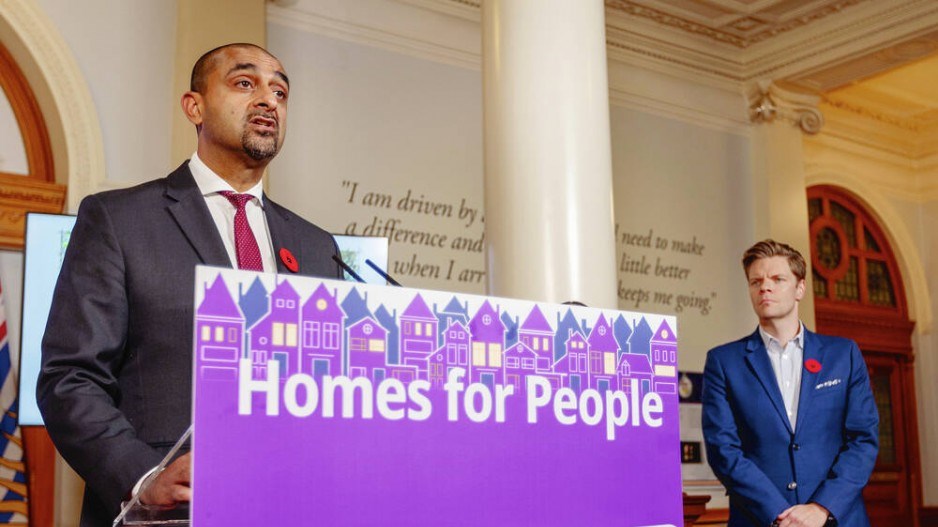The province has introduced new legislation to fill a gap left by its plans to speed up new housing development.
The new legislation, introduced Tuesday, provides a new tool to establish up front what amenity contributions developers would be expected to provide with each project.
Community amenity contributions can include things like affordable housing units, parks, childcare and community facilities, public art, cultural spaces or cash-in-lieu contributions.
They tend to be negotiated during the rezoning process, so municipalities were concerned they would lose out on amenity funding after the province introduced legislation allowing up to six units on a single-family lot in some areas without rezonings.
Housing Minister Ravi Kahlon said he has heard of homebuilders and municipalities getting caught up in drawn-out negotiations for funding for amenities, which can slow down construction and add to costs — or even render some projects no longer viable.
Kahlon said the proposed amenity cost charge, which would replace the existing community amenity contribution, would be established before a project begins, rather than in the middle of the development-approval process, creating more certainty and transparency.
“This will speed up the process while also allowing municipalities to continue to invest in the much-needed infrastructure in our communities,” he said.
“We understand local governments need money for infrastructure.
“What we’re saying with this legislation is this new tool allows for that to be done in a transparent way.”
Saanich Mayor Dean Murdock said the new legislation fills some of the gaps created by the provincial changes.
“It’s certainly a relief to hear that there’s going to be a mechanism to help support livability in our community with a version of amenity contributions that’s going to ensure that residents in our community also enjoy a high level of service.”
Victoria Mayor Marianne Alto said the new legislation will ensure cities have the tools to fund the kind of infrastructure that ensures livability.
Anne McMullin, chief executive of the Urban Development Institute, said the legislation makes development charges more transparent and predictable.
“Combined with the zoning measures announced last week, these are some of the most substantial changes to the development approval process in decades,” she said.
The legislation introduced Tuesday would also alter development cost charges, which allow municipalities to collect money from developers to help cover the cost of core infrastructure like water, sewer and roads.
Under the changes, local governments would also be able to allocate DCC funds for things like fire halls, police facilities and solid-waste facilities.
Casey Edge, executive director of the Victoria Residential Builders Association, said the new rules only expand the use of the collected DCCs and amenity contributions.
“So the fees and taxes for new housing are continuing to increase in a province with the highest average home prices in Canada,” he said.
“I don’t see how this assists the construction of moderate density, missing-middle housing for families.“
>>> To comment on this article, write a letter to the editor: [email protected]




